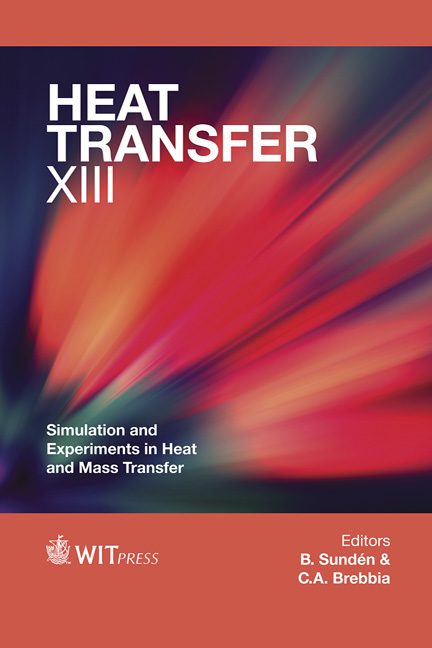The Temperature Reduction Of Components In The Induction Hobs Of Domestic Kitchens By Numerical And Visualization Models
Price
Free (open access)
Transaction
Volume
83
Pages
12
Page Range
451 - 462
Published
2014
Size
647 kb
Paper DOI
10.2495/HT140391
Copyright
WIT Press
Author(s)
E. Castillo, M. Miana, L. Sanagustín, I. Hupont, M. Valencia & S. Aranda
Abstract
Significant heat flows are generated inside of induction hobs of domestic kitchens, so they must be dissipated without large rises of temperature to avoid thermal damage in these systems. However, the compact design of these devices impedes effective dissipation techniques like fins or fans near to the heating sources. Besides, the complex shapes of the equipment and the large number of computational cells involved in the numerical model requires advances in visualization techniques to make the understanding of the simulation results easier. In this study, the thermal behaviour of the inductor hob is represented by a detailed CFD model, which is validated against experimental measurements. The analysis of the temperature fields and the exchanged heat flows helps to propose new designs for reducing the temperature, specifically, for the plastic components, which are mainly heated by the copper coils and cooled by the ferrites and the aluminum tray. Thus, it is proposed that the elimination of the plastic grooves that surround the copper spirals and the increment of the thermal conductivity of the material that connects plastic and ferrites. In both cases, the maximum temperature is reduced. For visualization purposes, a textured low poly 3D model is built from the high poly colored mesh resulting from full numerical CFD calculations. This solution allows the numerical results of this system in both PC and mobile devices to be shown. Keywords: induction hob, conjugate heat transfer, CFD, interactive visualization techniques.
Keywords
induction hob, conjugate heat transfer, CFD, interactive visualization techniques.





